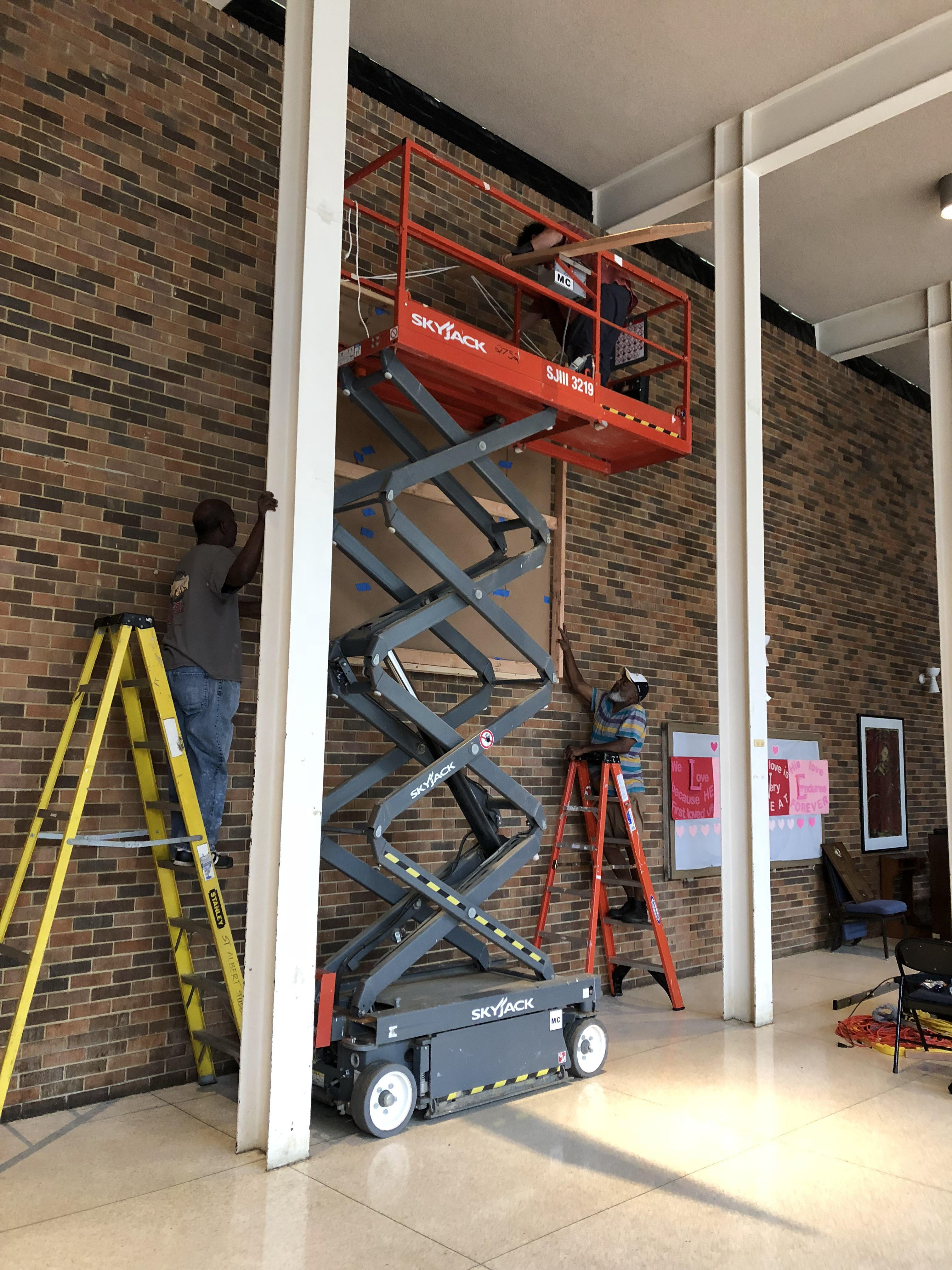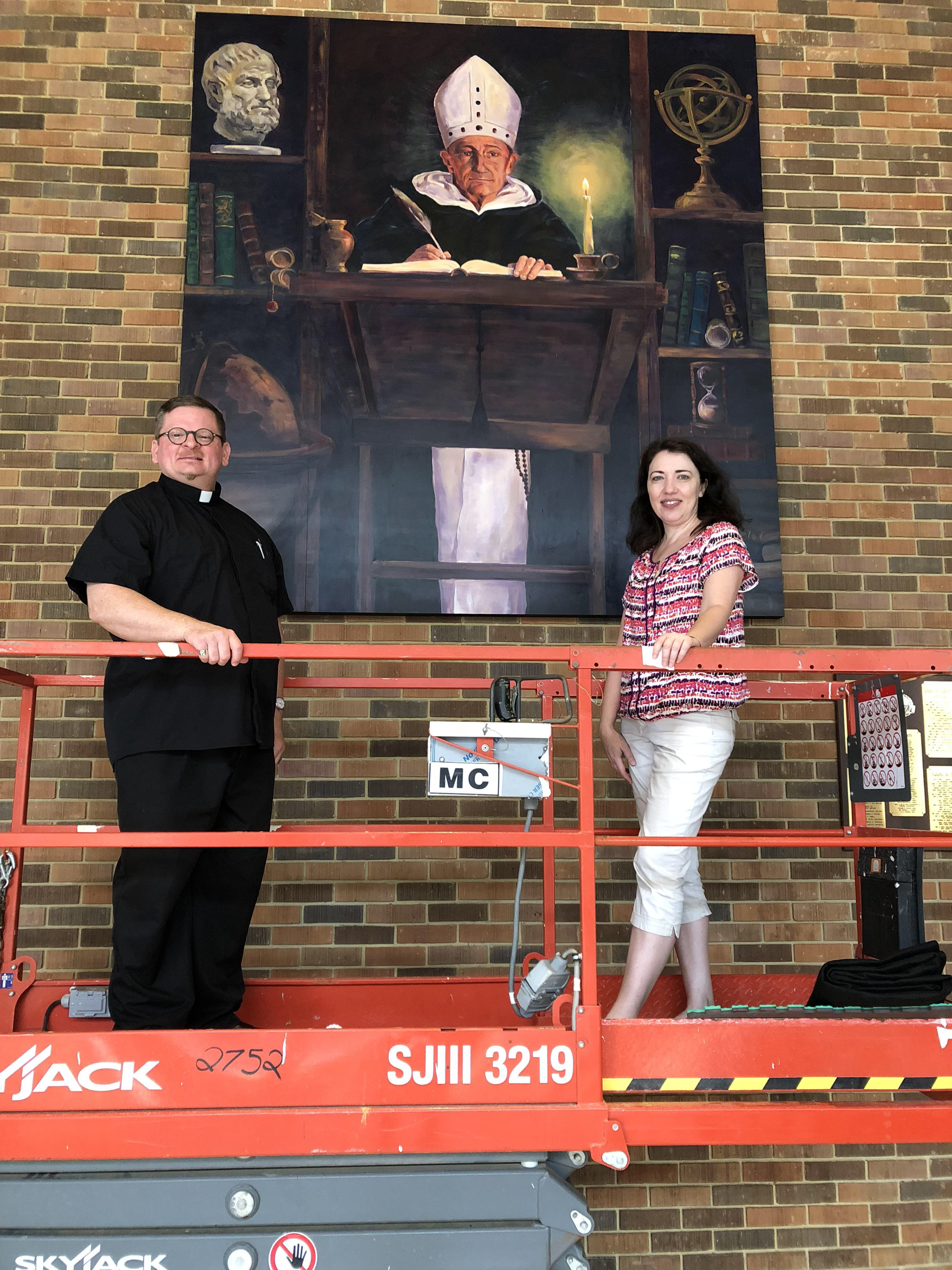Commission for St Albert the Great Chapel and Catholic Student Center
in Hammond, Louisiana
Acrylic on Ampersand Gessobord, 7'0" x 7'6"
This large-scale work represents St. Albert the Great (c. 1200 – November 15, 1280), also known as Albertus Magnus and Albert of Cologne. The German Dominican friar, bishop, philosopher and theologian is one of only 36 Doctors of the Church. He is probably best known as the mentor of St. Thomas Aquinas, whose teachings form the core of priestly education. St. Albert is patron saint of medical technicians, philosophers, scientists, and students.
There are few depictions of Albert and none from during his lifetime. Of the few that exist, Tommaso da Modena’s fresco in the convent of San Nicolo at Treviso, is the most well-known and represents our modern conception of Albert. From this starting point, the artist’s vision was to create a work that depicted Albert, the scholar, surrounded by symbols that influenced him and demonstrate his legacy. Shown in his study, glancing up from his manuscript with a slight smile, perhaps as his protégé, St. Thomas enters. Clothed in Dominican robes and mitre, symbol of his office, Bishop of Regensburg, his face reflects our understanding of Albert. We see a deep philosopher, keen scientist, devoted teacher, and steadfast friend, all things reflected in his writings.
The candle, the light of knowledge, illuminates his face and symbols of his life and influence. The bust of Aristotle over Albert’s right shoulder alludes to his study of the complete works of Aristotle and his synthesis of Aristotle and Christian philosophy. St. Albert digested, interpreted, and systematized the whole of Aristotle’s works, gleaned from the Latin translations and notes of the Arabian commentators. Most modern knowledge of Aristotle was preserved and presented by St. Albert.
The light of knowledge also captures symbols of Albert’s far ranging studies. Astronomy, theology, psychology, minerology, botany, logic, ethics, friendship, law, justice and love were all subjects of Albert’s mind and pen. They are all overtly, as in the astrolabe, or subtly, included in the work. One very well-known aspect of Albert’s personality is depicted on the globe, representative of his all-encompassing interests. Humility, from the Latin root humus or earth, was perhaps his most significant trait. The artist has attempted to demonstrate Albert’s unique blend of humility in combination with his devotion to science, philosophy and brotherly love with a depiction of a humble creature springing from and atop a world both physical and metaphysical.
Time and Albert’s contribution far beyond his mortal life is represented by the hourglass as are the writings he produced. Albert’s writings collected in 1899 went to thirty-eight volumes, which is reflected by numerous books depicted on the shelves around him.
The Pfälzer Löwe or Palatinate Lion is both a reference Albert’s native land, the Holy Roman Empire County Palatine of the Rhine, and to Southeastern Louisiana University, whose Catholic Student Center commissioned the work.



Unveiling and blessing of St. Albert the Great at the Student Center's auditorium
